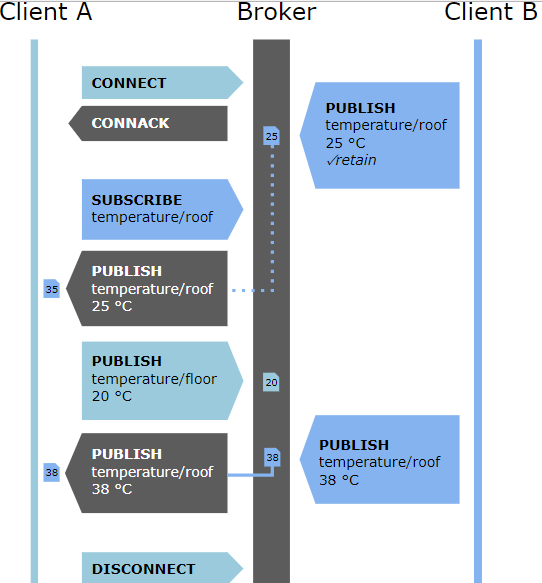Get into MQTT in 3 minutes (Python+Docker)
In my second week of internship, I got a chance to involve in a IoT project. There, I had to quickly go through some concepts before writing codes for the application.So I thought to share some knowledge here, about MQTT by building a example app.
What is MQTT?
Firstly, we have to understand what actually MQTT is. MQTT is an ISO standard (ISO/IEC PRF 20922) publish-subscribe-based messaging protocol. Message Queuing Telemetry Transport (MQTT) was designed by Andy Stanford-Clark (IBM) and Arlen Nipper in 1999 for connecting Oil Pipeline telemetry systems over satellite. Initially it came out as a proprietary protocol but in 2010 was released free and became OASIS standard in 2014. It is designed for connections with remote locations where a “small code footprint” is required or the network bandwidth is limited.
Here is the simple publisher/subscriber message broker pattern used in mqtt.

Publish telemetry to the MQTT server
Next, we are going to build a client to publish data to the mqtt message broker. (Later in this tutorial, we create the mqtt server and connect the clients… )
First we need to run (in cmd) ,
pip install paho-mqtt
then, create pub_client_1.py with following simple code snippet.
#simulator device 1 for mqtt message publishing
import paho.mqtt.client as paho
import time
import random
#hostname
broker="localhost"
#port
port=1883
def on_publish(client,userdata,result):
print("Device 1 : Data published.")
pass
client= paho.Client("admin")
client.on_publish = on_publish
client.connect(broker,port)
for i in range(20):
d=random.randint(1,5)
#telemetry to send
message="Device 1 : Data " + str(i)
time.sleep(d)
#publish message
ret= client.publish("/data",message)
print("Stopped...")
easy ??? create another client pub_client_2.py
Subscribe telemetry from the MQTT server
Now, create subscriber.py with following code.
import paho.mqtt.client as mqtt
# This is the Subscriber
#hostname
broker="localhost"
#port
port=1883
#time to live
timelive=60
def on_connect(client, userdata, flags, rc):
print("Connected with result code "+str(rc))
client.subscribe("/data")
def on_message(client, userdata, msg):
print(msg.payload.decode())
client = mqtt.Client()
client.connect(broker,port,timelive)
client.on_connect = on_connect
client.on_message = on_message
client.loop_forever()
Okay, now we have created publishers and subscribers. We are going to create mqtt service using docker.
Simply create a folder and save the following code to docker-compose.yml file.
version: "3"
services:
mqtt:
image: toke/mosquitto
network_mode: bridge
container_name: mqtt
expose:
- 1883
ports:
- 1883:1883
restart: unless-stopped
Open powershell and cd into the folder and run,
docker-compose up
After hosting the mqtt server you can run clients. Increase delay times if the scripts crash. We can get see clients connecting and disconnecting to the Mosquitto MQTT server.
Check running docker containers.
docker container list -a
Stop MQTT service.
docker container stop mqtt
Start Again.
docker container start mqtt
To remove container, first stop the container and then remove,
docker container rm mqtt
docker image rm toke/mosquitto
We can connect IoT devices easily like this. This enables Machine-to-machine(M2M) communication in the industry level IoT solutions.
The End
This is very simple , but, will ease your life a lot. Hope you enjoyed.
Happy Coding!